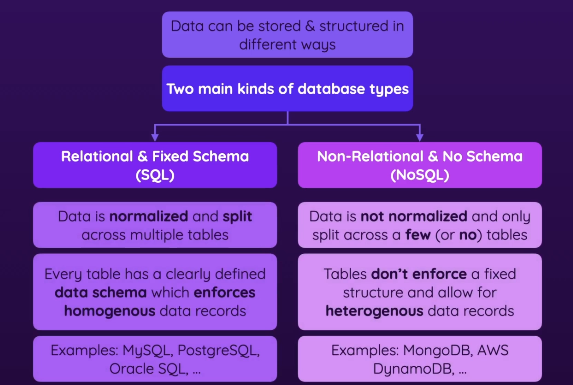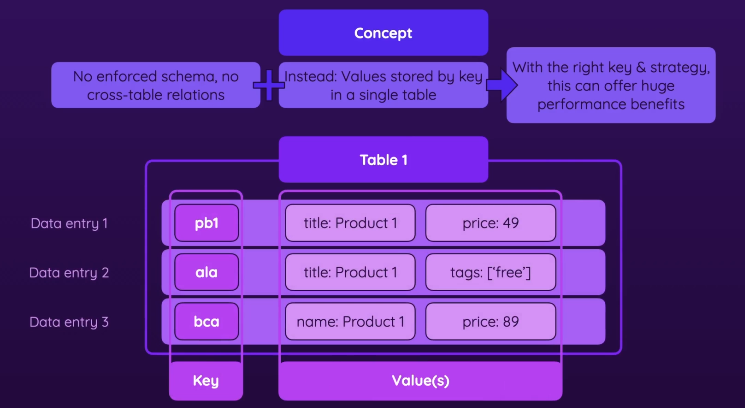- diagram

SQL DB / Relational DB
- SQL = Structured Query language
- like a universal language specifically designed for talking to and managing data in many different types of databases
- It’s how you ask the database for information, update it, or organize it
- u should plan the structure ahead of time → good for maintaining good code quality
- data stored in tables
- you add new lines (adding new record)
- they can form relationships

- popular databases
- oracle db (expensive), postgres, MySQL, SQLite, etc (some are open source)
- PostgreSQL (Postgres)
- one specific type of database that understands and uses the SQL language
- a popular and powerful open-source relational database management system
- you’d use SQL commands (written with the help of the
postgres.js library) to interact with a PostgreSQL database
NoSQL DB / Non-relational
- diagram

- one main advantage: flexibility & scalability
- uses things such as key/value pairs, or document models where u store everything in a single document (like a JSON)
- scalability
- you’re able to change the structure of your data afterwards without having to change the entire database
- not obliged to hold the original structure of the table that was created at the time when you decided to build a users table
- horizontally (having more fields) & vertically (more records) scalable
- created to address the pain ppl felt using sql db
- popular


